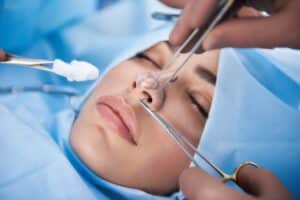Breast Augmentation Unveiled: Addressing Common Boob Job FAQs
Navigating the world of cosmetic surgery, specifically boob jobs, can often lead to a maze of questions and uncertainties. This post aims to demystify the process by addressing some of the most frequently asked questions about breast augmentation. From understanding the types of procedures available to grasping recovery timelines and potential risks, our goal is to provide clear, concise answers that empower you with knowledge. Whether you’re considering this surgery for aesthetic or medical reasons, having accurate information at your fingertips is crucial in making informed decisions about your body.
Understanding Breast Augmentation
Types of Implants
Breast augmentation offers two main types of implants: saline and silicone. Saline implants are filled with sterile salt water after being placed in the chest, allowing for a smaller incision. Silicone implants come pre-filled with silicone gel, which feels more like natural breast tissue.
Saline implants might be chosen for their safety feature; if they leak, the body absorbs the saline harmlessly. However, silicone implants are often preferred for their more natural feel and appearance.
Surgical Procedure
The surgical procedure involves placing the implant either under the breast tissue or beneath the chest muscle. The choice depends on various factors including body type, desired outcome, and implant type.
A plastic surgeon makes an incision around the nipple area or underarm to insert the implant. Post-surgery care is crucial for healing and achieving optimal results. Patients usually return home on the same day but should follow all recovery guidelines given by their surgeon.
Expected Outcomes
Setting realistic goals is essential when considering breast augmentation. While it can increase cup size significantly, outcomes vary based on individual anatomy and expectations.
Patients often experience improved self-esteem with their new appearance. However, it’s important to have detailed discussions with a plastic surgeon about potential results to ensure satisfaction.
-
Improved physical appearance
-
Enhanced confidence
-
Possible need for revision surgery in future
Understanding these aspects helps individuals make informed decisions about undergoing this transformative procedure.
Choosing the Right Implant and Placement
Body Shape Consideration
Selecting the right implant is crucial. Your body shape plays a big role in this decision. Each person’s physique is unique, requiring a tailored approach.
For someone with a slender frame, smaller implants might look more natural. Conversely, larger implants could complement those with broader shoulders. It’s all about balance and proportion.
Muscle Placement Options
The placement of implants can be either under or over the muscle. Both options have their pros and cons.
-
Under the muscle:
-
Pros: More natural look; less interference during mammograms.
-
Cons: Longer recovery time; more discomfort initially.
-
Over the muscle:
-
Pros: Shorter recovery period; less pain post-surgery.
-
Cons: Might appear less natural; higher chance of rippling.
Your lifestyle and aesthetic goals should guide your choice between these positions.
Surgeon Consultation
A consultation with your surgeon is key to making an informed decision. They will assess if you’re a good candidate for surgery based on various factors including health status and expectations.
During appointments, ask questions about each implant type and position’s benefits. This discussion ensures that your choice aligns with both your physical needs and desired outcome.
Preparing for Surgery and Post-Operative Care
Health Assessments
Before undergoing a boob job, patients must complete health assessments. These ensure they’re fit for surgery. The surgeon may request mammography or MRI scans to examine breast tissue. Blood tests are common too.
Patients should disclose all medications to their surgeon. This includes over-the-counter drugs and supplements. Some substances can increase bleeding risk during surgery.

Surgery Guidelines
On the day of the operation, patients should follow specific instructions from their plastic surgeons. Fasting is usually required due to anesthesia risks. Arranging transportation home post-surgery is also crucial because patients won’t be able to drive.
After the procedure, following post-surgery care guidelines is vital for healing:
-
Keep the incision area clean and dry.
-
Use prescribed pain meds to manage discomfort.
-
Avoid heavy lifting or strenuous activities.
These steps help prevent infection and reduce scar tissue formation.
Follow-Up Care
Post-operative appointments are essential in recovery monitoring:
-
Initial check-ups focus on stitch removal and assessing any immediate complications.
-
Later visits might address concerns like scar appearance or potential obstruction issues.
Attending these appointments allows surgeons to detect early signs of problems such as infection or improper healing of tissue around implants, possibly preventing additional surgeries.
Recovery Process and Managing Expectations
Recovery Timeline
After a boob job, the recovery process begins. Most people can return to work within one or two weeks. However, full recovery takes longer.
Heavy lifting and strenuous activities should be avoided for up to six weeks. This helps ensure proper healing.
Pain Management
Managing pain is crucial during the healing phase. Pain levels vary from person to person. Doctors usually prescribe medication for this period.
Over-the-counter pain relievers also help manage discomfort effectively. It’s important to follow your doctor’s advice closely.
Realistic Goals
Setting realistic expectations for the final results is key. Full results might take several months to become apparent as swelling reduces and tissues heal.
Understanding that every individual’s body heals differently will help in setting these goals. Patience is essential during this period.
Physical Activities and Lifestyle Adjustments
Exercise Timeline
After a boob job, patients often wonder when they can return to their exercise routines. Initially, light activities are allowed. Walking is encouraged immediately after surgery to promote blood circulation.
However, it’s crucial to avoid strenuous exercises for at least six weeks. This includes anything that raises your heart rate or blood pressure significantly. Gradually, you can reintroduce more intense workouts, but always consult with your surgeon first.
Lifestyle Choices
A boob job also leads to changes in lifestyle choices and requires long-term care considerations. Clothing options may shift as some find that certain styles fit better or prefer new looks to match their updated body shape.
Physical activities might need adjustment too. High-impact sports could increase the risk of implant damage or displacement over time. It’s important to wear supportive gear during such activities.
For maintaining implant integrity:
-
Regular check-ups are essential.
-
Be mindful of any significant changes in weight, as this can affect the appearance and health of breast implants.
-
Protecting your skin from excessive sun exposure helps maintain its elasticity around the implants.
Long-Term Considerations and Maintenance
Revision Surgery
Revision surgery might be necessary over time. It’s not unusual for individuals to undergo additional surgeries years after their initial procedure. This could be due to changes in personal preference, implant issues, or natural aging processes that affect the appearance of the breasts.
One key reason for revision can be capsular contracture, where scar tissue around the implant tightens. Another is implant rupture or leakage which requires prompt attention. Always discuss these possibilities during your consultation.
Breast Health Monitoring
Monitoring breast health with implants is crucial. Implants do not increase the risk of breast cancer but they can make mammograms more challenging to read.
Regular check-ups are essential for early detection of any issues. Make sure you inform your healthcare provider about your implants before any breast exam or screening.
Breast self-exams should also become a part of your routine. Look out for changes in shape, size, or feel and report them immediately.
Regular Check-Ups
Regular visits to your healthcare provider are vital for long-term maintenance after a boob job. These appointments allow for monitoring of implant condition and overall breast health.
During these visits, ask questions about anything concerning you regarding your implants or general breast health.
Ensure you attend all scheduled follow-up appointments post-surgery. They play a critical role in ensuring recovery progresses well and complications are avoided.
Risks and Complications to Be Aware Of
Common Risks
Breast augmentation surgery, like any surgical procedure, carries certain risks. Infection, scarring, and changes in nipple or breast sensation are some common issues women may experience. There’s also a chance of implant leakage or rupture over time.
It’s crucial for women to understand these potential complications before deciding on surgery. Knowing the risks helps in making an informed decision. It also prepares one for the recovery process.
Immediate Signs
Some complications require immediate medical attention. These include severe pain that doesn’t improve with medication, signs of infection like fever or redness at the surgical site, and unusual swelling or discharge.
If you notice any of these symptoms after your boob job, contact your surgeon right away. Prompt action can prevent more serious problems from developing.
Minimizing Risk
There are strategies to reduce risk before and after surgery. Choosing a qualified surgeon is key. Look for someone experienced in breast augmentation surgeries with good reviews from past patients.
After surgery, follow all post-operative instructions carefully. This includes taking prescribed medications, attending follow-up appointments, and avoiding strenuous activities until cleared by your doctor.
Maintaining a healthy lifestyle can also help minimize complications. Eating well-balanced meals aids healing while avoiding smoking speeds up recovery time.
Cost, Insurance, and Financing Options
Average Costs
The cost of a boob job varies widely. It depends on the area, size, types of implants, and the team performing the procedure. Generally, prices range from $5,000 to $10,000.
This cost usually covers all expenses: surgeon’s fees, anesthesia, operating room facilities, and other related costs. However, it’s crucial to get a detailed quote from your chosen clinic. This helps avoid any unexpected expenses.
Insurance Coverage
Most insurance plans consider breast augmentation cosmetic surgery. Thus they do not cover it. There are exceptions for reconstructive surgeries after mastectomy or injury.
Before scheduling your surgery:
-
Check with your insurance provider.
-
Understand what is covered.
-
Explore if there are conditions under which part of your procedure might be covered.
Financing Options
For those without coverage or sufficient savings:
-
Medical credit cards offer financing specifically for health procedures.
-
Personal loans can provide another avenue for funding surgery.
-
Some clinics have in-house payment plans that allow you to pay over time.
It’s important to research these options carefully:
-
Compare interest rates
-
Review terms and conditions
-
Ensure you can meet monthly payments without financial strain
By understanding all aspects of cost:
You make an informed decision about proceeding with breast augmentation.
Summary
Breast augmentation, a significant decision for many, involves various factors from choosing the right implant to understanding the recovery process. This article has navigated through essential aspects such as preparation for surgery, post-operative care, lifestyle adjustments, and long-term maintenance. It also addressed potential risks and complications, alongside financial considerations. This comprehensive guide aims to equip readers with the knowledge needed to make informed decisions about breast augmentation.
Reflecting on these insights encourages individuals to approach their breast augmentation journey with confidence and clarity. For further guidance or personal consultation, reaching out to a qualified plastic surgeon is recommended. Their expertise can tailor advice specific to individual needs and expectations, ensuring the best possible outcome for those considering this transformative procedure.
Frequently Asked Questions
What is breast augmentation?
Breast augmentation, also known as a boob job, involves using implants or fat transfer to increase the size of your breasts. This cosmetic procedure aims to enhance breast fullness and symmetry.
How do I choose the right implant and placement?
Choosing the right implant involves considering factors like material (silicone or saline), shape, size, and texture. Placement can be either above or below the chest muscle, depending on your body type and desired outcome. A consultation with a certified plastic surgeon is essential for making an informed decision.
What should I expect in terms of preparation and post-operative care?
Preparation includes medical evaluations and discussing expectations with your surgeon. Post-operative care involves following specific guidelines to ensure proper healing, such as medication management, wearing supportive garments, and attending follow-up appointments.
How long is the recovery process after a boob job?
The initial recovery period typically lasts 1-2 weeks. Most patients can return to work within this timeframe but should avoid strenuous activities for up to six weeks. Full recovery varies among individuals but generally occurs within several months.
Can I engage in physical activities after my surgery?
Yes, but it’s crucial to wait until you’re fully healed before resuming high-impact exercises or heavy lifting—usually around six weeks post-surgery. Starting with light activities like walking can help promote circulation during early recovery stages.
What are some long-term considerations for breast implants?
Long-term considerations include potential need for revision surgery due to factors like aging or weight fluctuations affecting implant appearance. Regular check-ups are recommended to monitor implant condition over time.
Are there risks associated with breast augmentation?
Yes, as with any surgical procedure, there are risks including infection, changes in nipple sensation, implant leakage or rupture, and capsular contracture (scar tissue formation). Discussing these risks thoroughly with your surgeon beforehand is important.
How much does a boob job cost? Is it covered by insurance?
The cost of breast augmentation varies widely depending on geographic location, surgeon fees, and specific procedural details.












